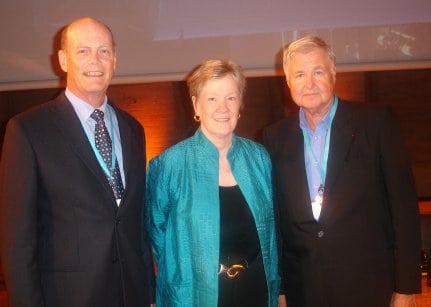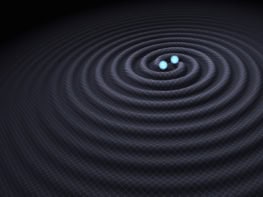
By Belle Dumé
The International Space Station celebrates its 10th anniversary later this year as its first module was launched in November 1998.
To commemorate the historic event, a symposium was held at UNESCO Headquarters in Paris this week — and in my capacity as physicsworld.com‘s Paris correspondent, I was there rubbing shoulders with space industry and agency leaders from around the world.
The symposium, organized by the International Astronautical Federation (IAF) and the European Space Agency (ESA), began by looking at history of the cooperation between 16 nations and how it all began in the 1980s — at the height of the cold war. Agreements were signed and collaborations forged thanks to the efforts of early ISS negotiators, including Mac Evans of the Canadian Space Agency, Margaret Finarelli of NASA and Fredrik Engstrom of the ESA (pictured above left to right), all now retired. The symposium also described the present, difficult, construction period and future ISS plans.
ISS crew members, Jean-Francois Clervoy, Leopold Eyharts, Satoshi Furukawa, Sergei Krikalev and Michael Lopez-Alegria also explained what it is like to actually live in space for long periods of time. Such experience will be invaluable for future human space travel.
ISS is first and foremost a giant space laboratory, with experiments being carried out in areas as diverse as medicine and life sciences, microgravity, materials science and physics, and Earth observation. An amazing technical achievement, the ISS is the world’s biggest scientific collaboration to date.
Construction of the $60 billion space station (it weighs over 500 tons) began at the end of 1998 (with Zarya, the Russian control module). It has been successively built over the last decade by over 80 spaceflights, carrying different modules up to the orbiting outpost. This year, the Columbus research module from ESA, the Kibo Laboratory from Japan and the Dextre Robot of Canada were installed. This also means that all of the ISS partners now have their major elements assembled in orbit.
ISS assembly should be complete by 2010, by which time it should be the size of a football field from “port” to “starboard”.
The ISS is crucial in our quest to expand the boundaries of space exploration and research, and will be a real “stepping stone” to other planets in our solar system, like Mars, and beyond. It is also a magnificent testament to what can be achieved when nations collaborate for the advancement of humankind.



